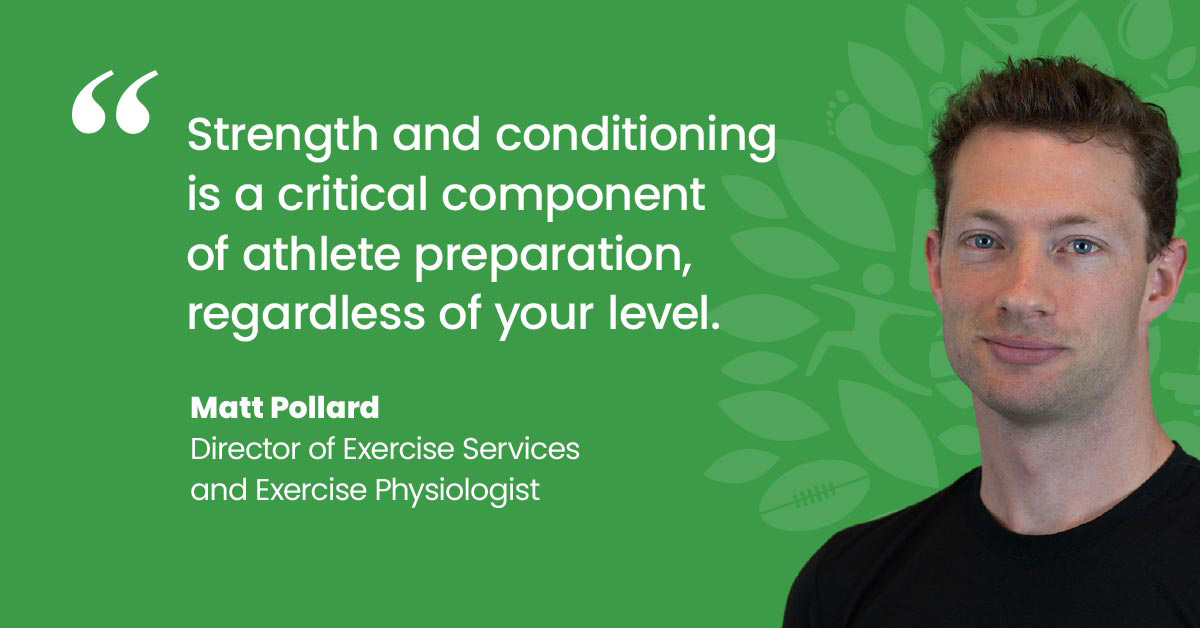Team Q&A: Matt Pollard

We recently sat down with Matt Pollard, Director of Exercise Services and Exercise Physiologist. During our chat we talked about what led him into the healthcare sector, the different types of clients he assists and the advice he would give to someone recovering from injury.
What inspired you to become an exercise physiologist?
I have always loved sport and exercise! After finishing year 12, I was keen to learn more about the sports industry and completed a Bachelor of Exercise and Sports Science at Deakin University. While completing this degree, I particularly liked the critical thinking and problem-solving I observed within health care, and I love helping people. So Exercise Physiology seemed like the perfect fit for me!
What type of clients do you assist?
My role has evolved over my 10+ year career. Early on I did a lot of high performance and strength and conditioning work, working with the Rowville Sports Academy and a lot of endurance runners before moving primarily into musculoskeletal rehab. Over the last 5 or so years, I have niched down further to working predominantly with lower limb rehab for knees, feet and ankles.
How can an exercise physiologist help someone recover from injury or improve performance?
An Exercise Physiologist’s primary skill set is exercise rehabilitation. Having completed a Bachelor of Exercise Science, we are experts in exercise programming and prescription and movement assessment. The Masters of Clinical Exercise Physiology then teaches us to apply our skillset to “clinical” populations. For me personally, this is rehabilitating lower limb injuries. For other Exercise Physiologists in our team that might be designing programs to assist in cancer treatments, or as part of diabetes management etc.
What advice would you give to someone recovering from an injury?
The human body is incredibly resilient and adaptable. If we consistently apply ourselves to an effective rehabilitation pathway, then the body can recover to incredible levels. This may even mean rehabilitating to a point beyond where you were prior to injury, in order to reduce the risk of re-injury.
What role can strength and conditioning play for an athlete playing at a local level?
Strength and conditioning is a critical component of athlete preparation, regardless of your level of sport/activity. The Australian Physical Activity Guidelines suggest that adult Australians should be completing strength training twice a week in order to maintain good health and wellbeing. This is even more true for athletes in order to mitigate injury risk, and to improve athletic performance and so should be a part of every athlete’s program.
What’s your view on whether athletes are born or made?
I think it is a bit of both. There is obviously a genetic component to athletic performance, but hard work and consistency will allow the human body to achieve incredible things.
If you could achieve your sports/athletics dream what would it be?
Depends when you are asking. If you are asking me 15 years ago it would be to play in an AFL Premiership for the Tiges, or to play in the NBA. Now it would be to display good healthy behaviours and be a good role model for my children to set them up with a lifetime of loving sport and activity.
Book an appointment
If you are an aspiring athlete or a parent looking for professional advice book an appointment with Rise Health Group today.
